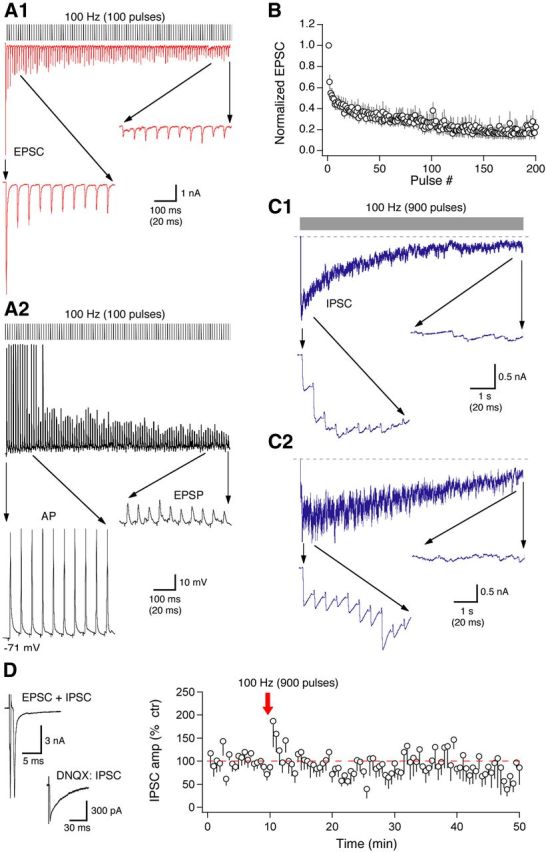Figure 9.

In slice preparations, a high-frequency electrical stimulation (100 Hz) rapidly diminishes synaptic currents. A1, EPSCs of one NM neuron in response to a train stimulation (100 Hz, 100 pulses). The first and the last 10 responses are shown at a larger timescale. By the end of the recording (duration of 1 s), EPSCs diminish to a minimal level. A2, Correspondingly, in current-clamp recordings, a postsynaptic NM cell was driven by the same stimulus protocol to fire action potentials (APs) only at the beginning of the stimulation. A total of 10 and 5 cells were recorded in voltage- and current-clamp mode, respectively. B, Normalized EPSC amplitudes plotted against stimulus pulse number (n = 10). C1, C2, IPSCs of two representative NM neurons in response to a train stimulation (100 Hz, 1000 pulses). The first and the last 10 responses are shown at a larger timescale. Because of their slower kinetics, IPSCs temporally summated. The summated responses diminished to a level close to the baseline (indicated by the dashed line) in ∼10 s. Individual IPSCs vary widely in their amplitudes, resulting in mixed short-term synaptic facilitation and depression. D, Concurrent activation of the glutamatergic and GABAergic pathways with train stimulation (100 Hz, 900 pulses) does not induce any long-term plasticity of the IPSCs (n = 8). Stimulus artifacts in the EPSC and IPSC recordings are blanked for clarity.
